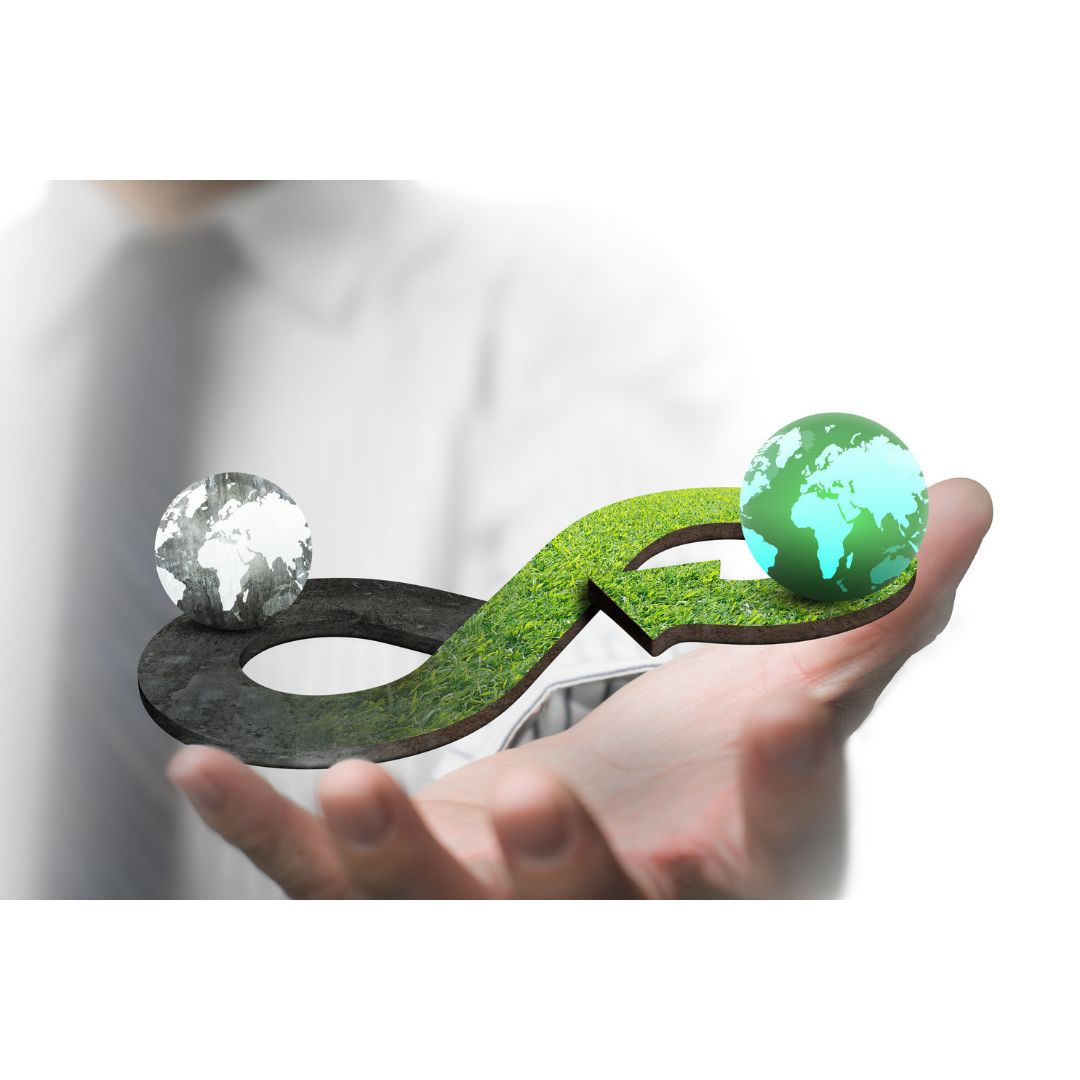Reducing greenhouse gas (GHG) emissions and thus combating climate change and preventing the global temperature from rising by more than 2 degrees Celsius compared to pre-industrial levels is a vitally important issue of our time, sometimes so ubiquitous that it becomes synonymous with environmental efforts as a whole. This omnipresence is justified, of course, because according to the UN Environment Programme’s Emissions Gap Report 2021, GHG emissions grew on average by 1.3 per cent per year from 2010 to 2019, reaching a record high of 51.5 gigatons of CO2 equivalent in 2019. And even though, “the COVID-19 pandemic led to an unprecedented decline in fossil CO2 emissions in 2020 […] fossil CO2 emissions are expected to have a near full recovery in 2021, with emission levels only slightly lower than the record high in 2019”.1
At its core, the circular economy is about decreasing resource use, not GHG emissions, and the transition towards the circular economy will have a positive impact on many diverse environmental issues. For example, composting or anaerobic digestion of organic materials returns valuable nutrients to the land, contributing to its regenerating it and preventing soil degradation, which in turn helps prevent droughts and floods or biodiversity loss. Nevertheless, the circular economy can play a crucial role in combating climate change. In a 2019 report, the Ellen MacArthur Foundation argued that of the total global GHG emissions in 2010, 55% were from energy, while 45% were associated with the production of materials, products, food, and so on.2 While these 45% also largely stem from energy-generating processes, energy demands of industry are often hard to abate and cannot (yet) be replaced by renewable energies. Therefore, the circular economy can help solve the problem of the remaining 45% by producing less and increasing the value of materials and products through repair, reuse, and recycling. Furthermore, the recent Russian attack on Ukraine has also brought to the attention of policymakers and the public pressing non-environmental reasons for limiting our dependence on fossil fuels.
The transition towards the circular economy brings not only environmental but also significant economic benefits. It is safe to say that the European Union’s growing interest in the concept of the circular economy over the last decade is also due to two reports produced – again – by the Ellen MacArthur Foundation in collaboration with McKinsey. In an often-cited 2013 report, it was argued that the transition towards the circular economy could lead to the EU manufacturing sector realising net material cost savings worth up to $630 billion per annum towards 2025 – which could then in turn stimulate economic activity in areas such as product development, remanufacturing, and refurbishment.3 Another study from 2015 estimated that the circular economy would allow “Europe to grow resource productivity by up to 3 per cent annually. This would generate a primary resource benefit of as much as €0.6 trillion per year by 2030 for Europe’s economies. In addition, it would generate €1.2 trillion in non-resource and externality benefits, bringing the annual total benefits to around €1.8 trillion versus today.” All of which would get translated into a GDP increase of as much as 7% compared to the non-circular scenario.4
While it could well be argued that GDP is not a suitable index to measure the impact of the circular economy, as the circular economy is about maximising the value of already existing products and utilised resources and not about increasing money flows through the production of more and more goods, such a comparison did not and does not fail to have an impact in (re)assessing the concept of the circular economy.
By now, the environmental and sometimes even economic benefits of the transition towards the circular economy are largely uncontested. However, the question of social impacts and benefits is often overlooked, with one exception: the potential of the circular economy to create new jobs. For example, in its Report on the New Circular Economy Action Plan, based on a study by Cambridge Econometrics, the European Parliament estimated that “the circular economy has the potential to […] create more than 700 000 new jobs by 2030”.5 Moreover, these jobs are expected to be created both in areas of high unemployment and in highly skilled positions, leading to an increase in high-skilled employment.
However, the social consequences of the transition towards the circular economy are a scarcely researched issue and it becomes more and more apparent that many well-intended environmental actions have adverse effects on society, especially on lower-income households. Therefore, it will be a crucial task to give more consideration to the social dimension in the transition process toward the circular economy.
